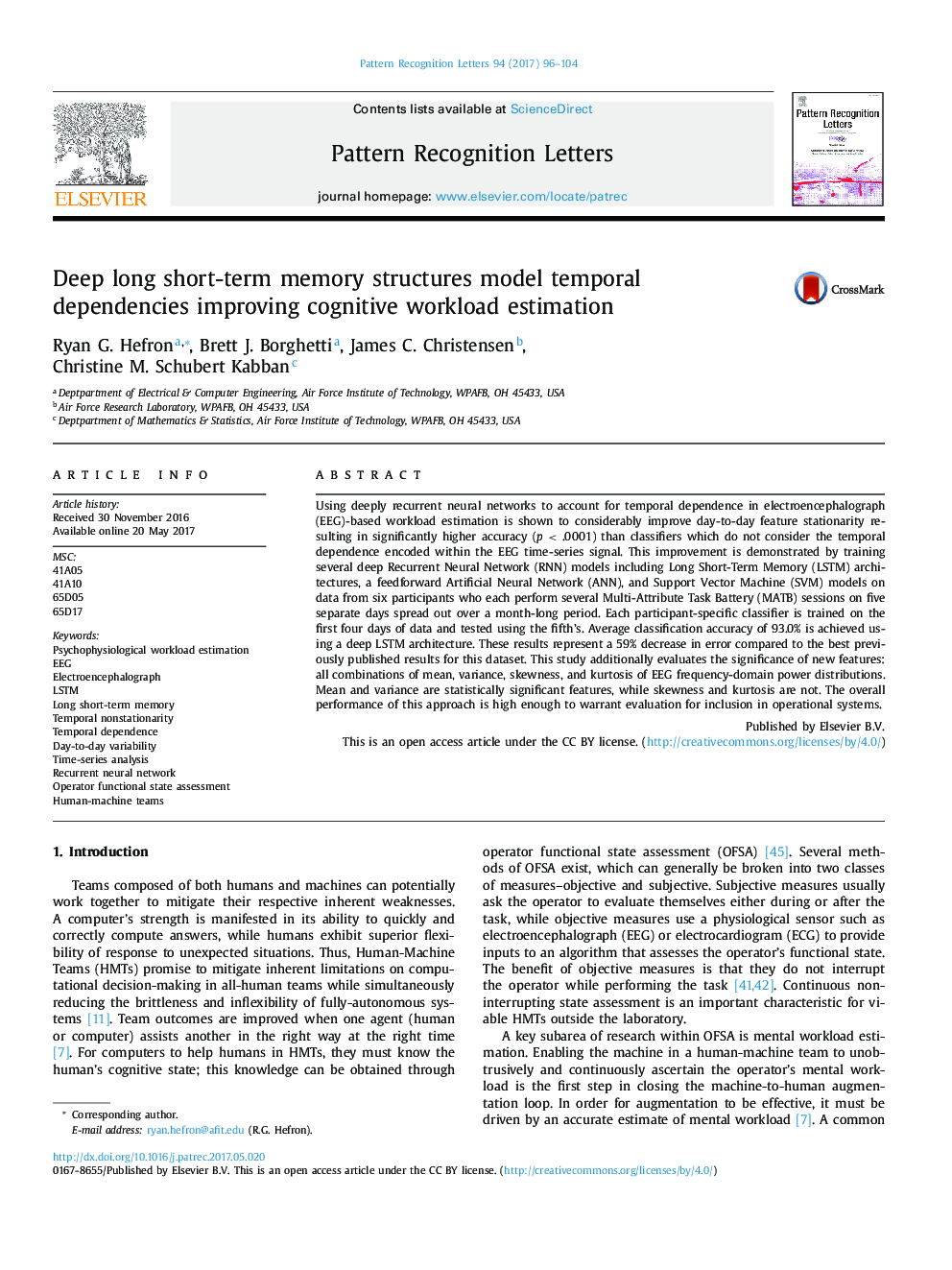| کد مقاله | کد نشریه | سال انتشار | مقاله انگلیسی | نسخه تمام متن |
|---|---|---|---|---|
| 4970063 | 1450025 | 2017 | 9 صفحه PDF | دانلود رایگان |
- A deep LSTM architecture is proposed to improve cross-day EEG feature stationarity.
- Mean, variance, skewness, and kurtosis input features are statistically evaluated.
- Models account for temporal dependencies in brain activity data, improving results.
- Achieves average classification accuracy of 93.0% using a deep LSTM architecture.
- A 59% reduction in error compared to best previously published results for dataset.
Using deeply recurrent neural networks to account for temporal dependence in electroencephalograph (EEG)-based workload estimation is shown to considerably improve day-to-day feature stationarity resulting in significantly higher accuracy (p < .0001) than classifiers which do not consider the temporal dependence encoded within the EEG time-series signal. This improvement is demonstrated by training several deep Recurrent Neural Network (RNN) models including Long Short-Term Memory (LSTM) architectures, a feedforward Artificial Neural Network (ANN), and Support Vector Machine (SVM) models on data from six participants who each perform several Multi-Attribute Task Battery (MATB) sessions on five separate days spread out over a month-long period. Each participant-specific classifier is trained on the first four days of data and tested using the fifth's. Average classification accuracy of 93.0% is achieved using a deep LSTM architecture. These results represent a 59% decrease in error compared to the best previously published results for this dataset. This study additionally evaluates the significance of new features: all combinations of mean, variance, skewness, and kurtosis of EEG frequency-domain power distributions. Mean and variance are statistically significant features, while skewness and kurtosis are not. The overall performance of this approach is high enough to warrant evaluation for inclusion in operational systems.
Journal: Pattern Recognition Letters - Volume 94, 15 July 2017, Pages 96-104
